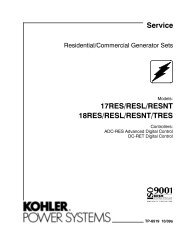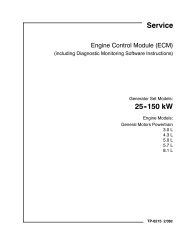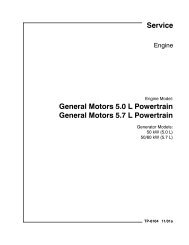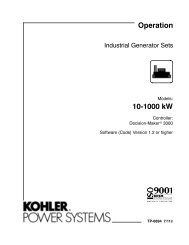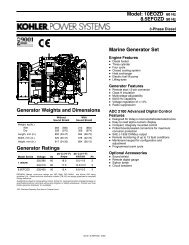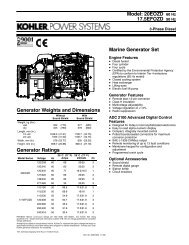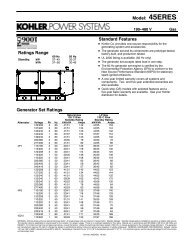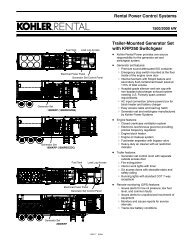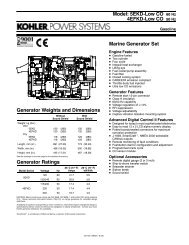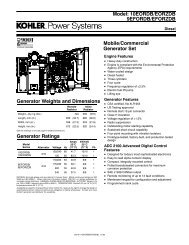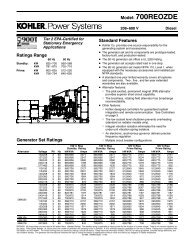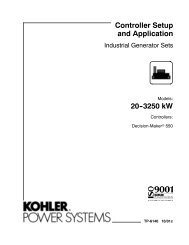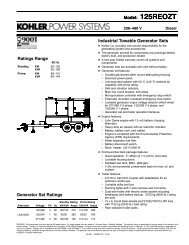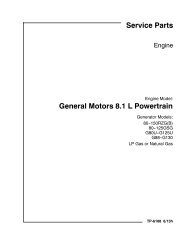Service Manual, General Motors 4.3L Engine (TP ... - Kohler Power
Service Manual, General Motors 4.3L Engine (TP ... - Kohler Power
Service Manual, General Motors 4.3L Engine (TP ... - Kohler Power
Create successful ePaper yourself
Turn your PDF publications into a flip-book with our unique Google optimized e-Paper software.
<strong>Engine</strong> Marine/Industrial <strong>4.3L</strong> 6-171<br />
<strong>Engine</strong> Set-Up and Testing<br />
After overhaul, the engine must be tested before it is<br />
installed in the vehicle. If a suitable test stand is not<br />
available, the following procedures can be used after the<br />
engine is installed in the vehicle.<br />
1. Fill the crankcase with the proper quantity and<br />
grade of engine oil.<br />
2. Add engine oil supplement GM P/N 1052367 or<br />
equivalent to the engine oil.<br />
Notice: DO NOT use cooling system seal tabs (or similar<br />
compounds) unless otherwise instructed. The use of<br />
cooling system seal tabs (or similar compounds) may<br />
restrict coolant flow through the passages of the cooling<br />
system or the engine components. Restricted coolant<br />
flow may cause engine overheating and/or damage to the<br />
cooling system or the engine components/assembly.<br />
3. Fill the cooling system with the proper quantity and<br />
grade of coolant.<br />
4. With the ignition OFF or disconnected, crank the<br />
engine several times. Listen for any unusual noises<br />
or evidence that any of the parts are binding.<br />
5. Start the engine and listen for unusual noises.<br />
6. Check the vehicle oil pressure gauge or light and<br />
confirm that the engine has acceptable oil<br />
pressure.<br />
If necessary, install an oil pressure gauge and<br />
measure the engine oil pressure.<br />
7. Operate the engine at about 1,000 RPM until the<br />
engine has reached normal operating temperature.<br />
8. Listen for improperly adjusted or sticking valves,<br />
sticking valve lifters or other unusual noises.<br />
9. Inspect for oil and/or coolant leaks while the engine<br />
is operating.<br />
10. Verify that the distributor is properly positioned.<br />
11. Perform a final inspection for the proper engine oil<br />
and coolant levels.<br />
2000 Marine/Industrial



